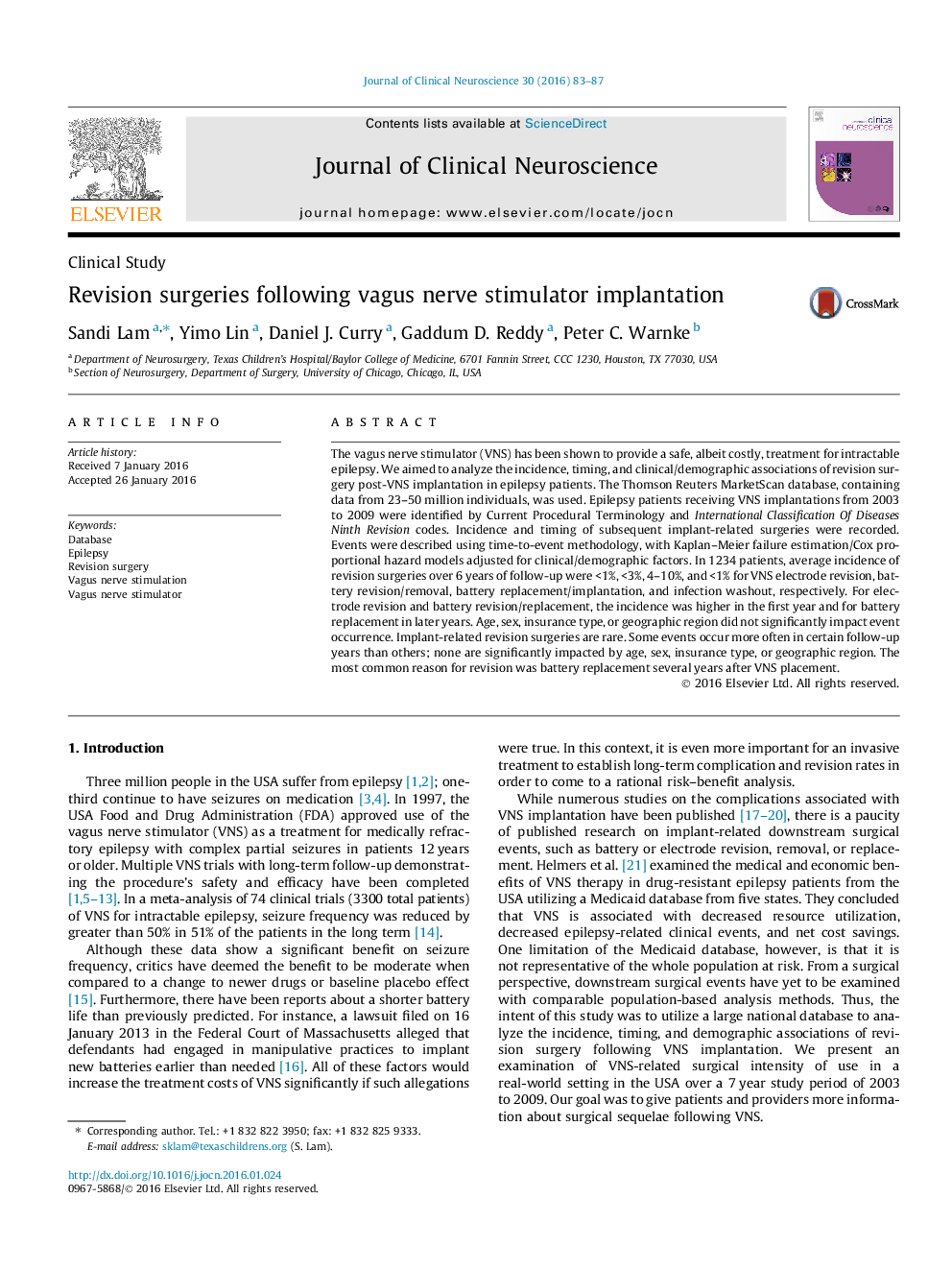| Article ID | Journal | Published Year | Pages | File Type |
|---|---|---|---|---|
| 3058144 | Journal of Clinical Neuroscience | 2016 | 5 Pages |
•Vagus nerve stimulator surgery complications are rare.•Lead revisions decrease after 1 year.•Battery changes increase after 4–7 years.
The vagus nerve stimulator (VNS) has been shown to provide a safe, albeit costly, treatment for intractable epilepsy. We aimed to analyze the incidence, timing, and clinical/demographic associations of revision surgery post-VNS implantation in epilepsy patients. The Thomson Reuters MarketScan database, containing data from 23–50 million individuals, was used. Epilepsy patients receiving VNS implantations from 2003 to 2009 were identified by Current Procedural Terminology and International Classification Of Diseases Ninth Revision codes. Incidence and timing of subsequent implant-related surgeries were recorded. Events were described using time-to-event methodology, with Kaplan–Meier failure estimation/Cox proportional hazard models adjusted for clinical/demographic factors. In 1234 patients, average incidence of revision surgeries over 6 years of follow-up were <1%, <3%, 4–10%, and <1% for VNS electrode revision, battery revision/removal, battery replacement/implantation, and infection washout, respectively. For electrode revision and battery revision/replacement, the incidence was higher in the first year and for battery replacement in later years. Age, sex, insurance type, or geographic region did not significantly impact event occurrence. Implant-related revision surgeries are rare. Some events occur more often in certain follow-up years than others; none are significantly impacted by age, sex, insurance type, or geographic region. The most common reason for revision was battery replacement several years after VNS placement.
